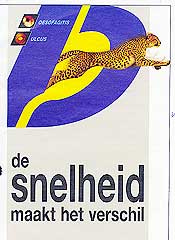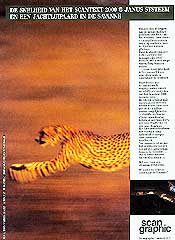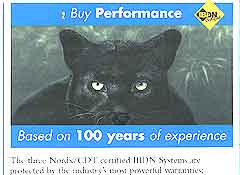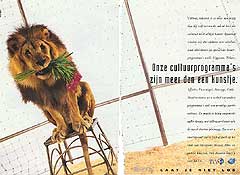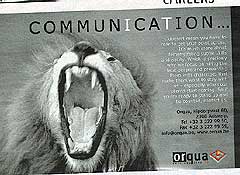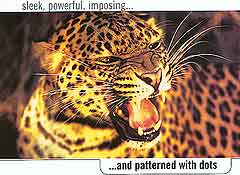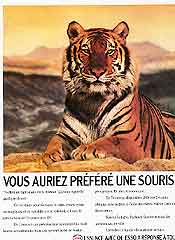
Animals in advertising — Bigger cats
Tiger, Lion, Cheetah, Black Panther and Leopard
are the only popular species. Cheetah and Panther stand for Speed or
Suppleness, and Power. The other species are commonly used in a more generic way
where any big feline could fit in. We note a slight preference depending the
need for stripes, a roar, or dots.
It is clear that several writers cannot correctly identify the species at hand. They get tangled in the dots and stripes. Others play it safe and do not risk any further than some obvious allusions about patterns.
It is clear that several writers cannot correctly identify the species at hand. They get tangled in the dots and stripes. Others play it safe and do not risk any further than some obvious allusions about patterns.



